February 12th Public Comments due on “Final” LANL Hexavalent Chromium Plume Remedy
![]() Twenty years ago, the hexavalent chromium plume was discovered in the regional aquifer 1,000 feet below ground surface at Los Alamos National Laboratory (LANL). Since then the debate about how to remove the dangerous hexavalent chromium from the regional drinking water aquifer has been ongoing between LANL, the New Mexico Environment Department, and the public.
Twenty years ago, the hexavalent chromium plume was discovered in the regional aquifer 1,000 feet below ground surface at Los Alamos National Laboratory (LANL). Since then the debate about how to remove the dangerous hexavalent chromium from the regional drinking water aquifer has been ongoing between LANL, the New Mexico Environment Department, and the public. 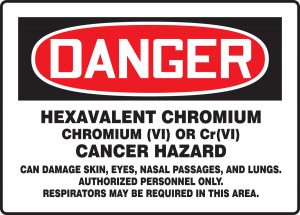
There are two forms of chromium: a healthy trivalent form and a toxic hexavalent form, which can cause lung cancer and damage the kidneys, liver, circulatory system, and nerve tissues.
LANL explains that the hexavalent chromium was used as a corrosion inhibitor in the electricity-generating steam plant, which then migrated from a discharge pipe through the complex volcanic geology to the drinking water aquifer.
In 2008, the Environmental Protection Agency designated the aquifer as the Española Basin Sole Source Drinking Water Aquifer after accepting the application submitted by Elaine Cimino of the La Cienega Valley Citizens for Environmental Safeguards and geo-hydrologist Zane Spiegel.
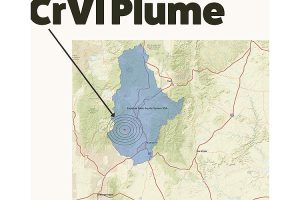 A sole source aquifer is one where the aquifer supplies at least 50 percent of the drinking water for its service area and there is no reasonably available alternative drinking water source should the aquifer become contaminated. The Española Basin aquifer is approximately 3,000 square miles. It stretches east and west of the Rio Grande between the Sangre de Christo and Jemez Mountains. To the north it reaches to Tres Piedras and to the south almost to Galisteo. See map at: https://epa.maps.arcgis.com/apps/webappviewer/index.html?id=9ebb047ba3ec41ada1877155fe31356b
A sole source aquifer is one where the aquifer supplies at least 50 percent of the drinking water for its service area and there is no reasonably available alternative drinking water source should the aquifer become contaminated. The Española Basin aquifer is approximately 3,000 square miles. It stretches east and west of the Rio Grande between the Sangre de Christo and Jemez Mountains. To the north it reaches to Tres Piedras and to the south almost to Galisteo. See map at: https://epa.maps.arcgis.com/apps/webappviewer/index.html?id=9ebb047ba3ec41ada1877155fe31356b
The hexavalent chromium plume sits on the southwestern side of the aquifer, which must be protected from the pollutants released by LANL over the past 80 years through its research and fabrication of plutonium triggers for nuclear weapons.
Please raise your voice that LANL needs to do more to protect the aquifer. Please submit comments about the draft National Environmental Policy Act (NEPA) Environmental Assessment for the Chromium Interim Measure and Final Remedy (DOE/EA-2216) by the February 12, 2024 deadline. Sample public comments will be available soon at nuclearactive.org. To access the two-volume document: https://www.energy.gov/nepa/articles/doeea-2216-draft-environmental-assessment 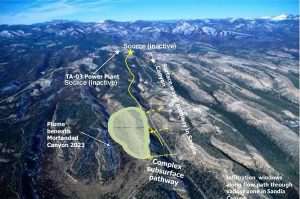
But, wait, there’s more. This week LANL requested public comments about its NEPA draft floodplain assessment for chromium remediation in the canyon bottoms above the plume. There is a 15-day public comment period and those comments are due February 9th. Sample comments you can use will be available soon at nuclearactive.org. To access the assessment: https://www.energy.gov/nepa/articles/chromium-remediation-sandia-and-mortandad-canyons-project-floodplain-assessment
Even though LANL held two public meetings this week about how to remove hexavalent chromium from the drinking water aquifer, there was no mention of the public comment opportunity to review the floodplain assessment for the hexavalent chromium in the Sandia and Mortandad canyon bottoms. The chromium plume is located below and between Sandia and Mortandad Canyons.
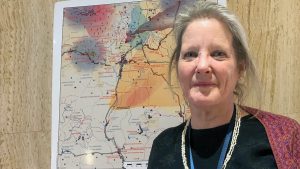 Joni Arends, of CCNS, expressed her dismay about how LANL is backsliding in its responsibilities to provide consistent public notice for the NEPA documents. She said, “It has been difficult to find, let alone receive consistent public notice for the recent onslaught of five draft NEPA documents for LANL that are subject to public review and comment. LANL is required to publish notices in local newspapers, post notices on their website and notify those who sign up to received electronic notice through email. Nevertheless, there are inconsistencies throughout for the five draft LANL NEPA documents that have been released for public review and comment since December 18th, 2023. In total, LANL has released close to 500 pages of technical and complex scientific analyses for public review and comment, all without consistent public notice.”
Joni Arends, of CCNS, expressed her dismay about how LANL is backsliding in its responsibilities to provide consistent public notice for the NEPA documents. She said, “It has been difficult to find, let alone receive consistent public notice for the recent onslaught of five draft NEPA documents for LANL that are subject to public review and comment. LANL is required to publish notices in local newspapers, post notices on their website and notify those who sign up to received electronic notice through email. Nevertheless, there are inconsistencies throughout for the five draft LANL NEPA documents that have been released for public review and comment since December 18th, 2023. In total, LANL has released close to 500 pages of technical and complex scientific analyses for public review and comment, all without consistent public notice.”
- Monday, January 22, 2024 –
 The SECOND public comment period opened the Los Alamos National Laboratory Electrical Power Capacity Upgrade Project Draft Environmental Assessment (DOE/EA-2911) for construction and operation of a new 115 kilovolt (kV) power transmission line and upgrading LANL’s existing infrastructure. For more information and to ACT NOW: Protect the Caja del Rio! Stop the Power Transmission Line at https://p2a.co/mhyopdf
The SECOND public comment period opened the Los Alamos National Laboratory Electrical Power Capacity Upgrade Project Draft Environmental Assessment (DOE/EA-2911) for construction and operation of a new 115 kilovolt (kV) power transmission line and upgrading LANL’s existing infrastructure. For more information and to ACT NOW: Protect the Caja del Rio! Stop the Power Transmission Line at https://p2a.co/mhyopdf
The SECOND public comment period ends on Tuesday, February 20, 2024.
The Draft EA is available in the NNSA NEPA Reading Room at: https://www.energy.gov/nnsa/nnsa-nepa-reading-room or directly at https://energy.gov/nepa/doeea-2199-los-alamos-national-laboratory-electrical-power-capacity-upgrade-project
- Friday, January 26, 2024 from noon to 1 pm MT –
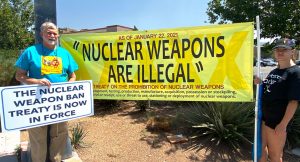 Join the weekly peaceful protest for nuclear disarmament on the four corners of Alameda and Sandoval in downtown Santa Fe with Veterans for Peace, CCNS, Nuclear Watch NM, Loretto Community, Pax Christi, Nonviolent Santa Fe, and others.
Join the weekly peaceful protest for nuclear disarmament on the four corners of Alameda and Sandoval in downtown Santa Fe with Veterans for Peace, CCNS, Nuclear Watch NM, Loretto Community, Pax Christi, Nonviolent Santa Fe, and others.
- Saturday, January 27th from noon to 2 pm Mountain,
 an online forum about Building a World Without Nuclear Weapons: An Urgent Imperative will focus on the increasing threat of nuclear war and what ordinary citizens can do to prevent it.
an online forum about Building a World Without Nuclear Weapons: An Urgent Imperative will focus on the increasing threat of nuclear war and what ordinary citizens can do to prevent it.
The speakers are John C. Wester, Archbishop of Santa Fe, NM; Dr. Ira Helfand, co-founder and past president of the IPPNW; and Marie Dennis, Catholic Nonviolence Initiative/Pax Christi International. For more information and to register, go to: https://paxchristima.org/
- Sunday, January 28th at noon to 3 pm–
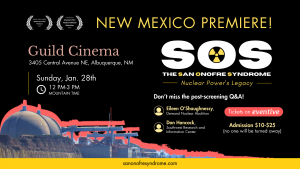 New Mexico Premiere of “SOS – The San Onofre Syndrome – Nuclear Power’s Legacy – at the Guild Cinema, 3405 Central Avenue NE, Albuquerque, NM. Post-screening Q&A with Eileen O’Shaughnessy of Demand Nuclear Abolition and Don Hancock of Southwest Research and Information Center. Tickets on Admission $10 – $25 (no one will be turned away). For more information: https://sanonofresyndrome.com/
New Mexico Premiere of “SOS – The San Onofre Syndrome – Nuclear Power’s Legacy – at the Guild Cinema, 3405 Central Avenue NE, Albuquerque, NM. Post-screening Q&A with Eileen O’Shaughnessy of Demand Nuclear Abolition and Don Hancock of Southwest Research and Information Center. Tickets on Admission $10 – $25 (no one will be turned away). For more information: https://sanonofresyndrome.com/
- Monday, February 5th –
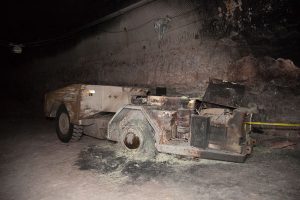 10-year anniversary of the truck fire in the WIPP underground. http://nuclearactive.org/salt-hauling-vehicle-catches-fire-in-wipp-underground/ and http://nuclearactive.org/doe-begins-investigation-of-vehicle-fire-in-wipp-underground-2/
10-year anniversary of the truck fire in the WIPP underground. http://nuclearactive.org/salt-hauling-vehicle-catches-fire-in-wipp-underground/ and http://nuclearactive.org/doe-begins-investigation-of-vehicle-fire-in-wipp-underground-2/
- Monday, February 12th –
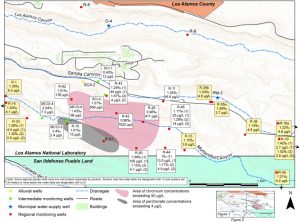 Comments due about LANL and its entities’ “final” remedy of the hexavalent chromium plume. Check back to http://www.nuclearactive.org for talking points and sample public comments you can use to craft your own.
Comments due about LANL and its entities’ “final” remedy of the hexavalent chromium plume. Check back to http://www.nuclearactive.org for talking points and sample public comments you can use to craft your own.
- Tuesday, February 20th –
 Comments due about the LANL’s Electrical Power Capacity Upgrade Project for a 115 kV line across the Caja del Rio, the Rio Grande to LANL. Check back to http://www.nuclearactive.org for talking points and sample public comments you can use to craft your own.
Comments due about the LANL’s Electrical Power Capacity Upgrade Project for a 115 kV line across the Caja del Rio, the Rio Grande to LANL. Check back to http://www.nuclearactive.org for talking points and sample public comments you can use to craft your own.
- Sunday, February 25th at 1 pm –
 showing of the “TV Event” at the Guild Cinema, 3405 Central Avenue NE, Albuquerque, NM. Mark your calendar. More information to follow.
showing of the “TV Event” at the Guild Cinema, 3405 Central Avenue NE, Albuquerque, NM. Mark your calendar. More information to follow.
Tags: 2023, Chromium Remediation in Sandia and Mortandad Canyons Project Floodplain Assessment, CrVI, Elaine Cimino, Environmental Assessment for the Chromium Interim Measure and Final Remedy (DOE/EA-2216), Española Basin Sole Source Drinking Water Aquifer, five NEPA documents since December 18, hexavalent chromium, La Cienega Valley Citizens for Environmental Safeguards, LANL, LANL Electrical Power Capacity Upgrade Project Environmental Assessment, Los Alamos National Laboratory, Mortandad Canyon, National Environmental Policy Act, NEPA, New Mexico Environment Department, Sandia Canyon, trivalent chromium, Zane Spiegel


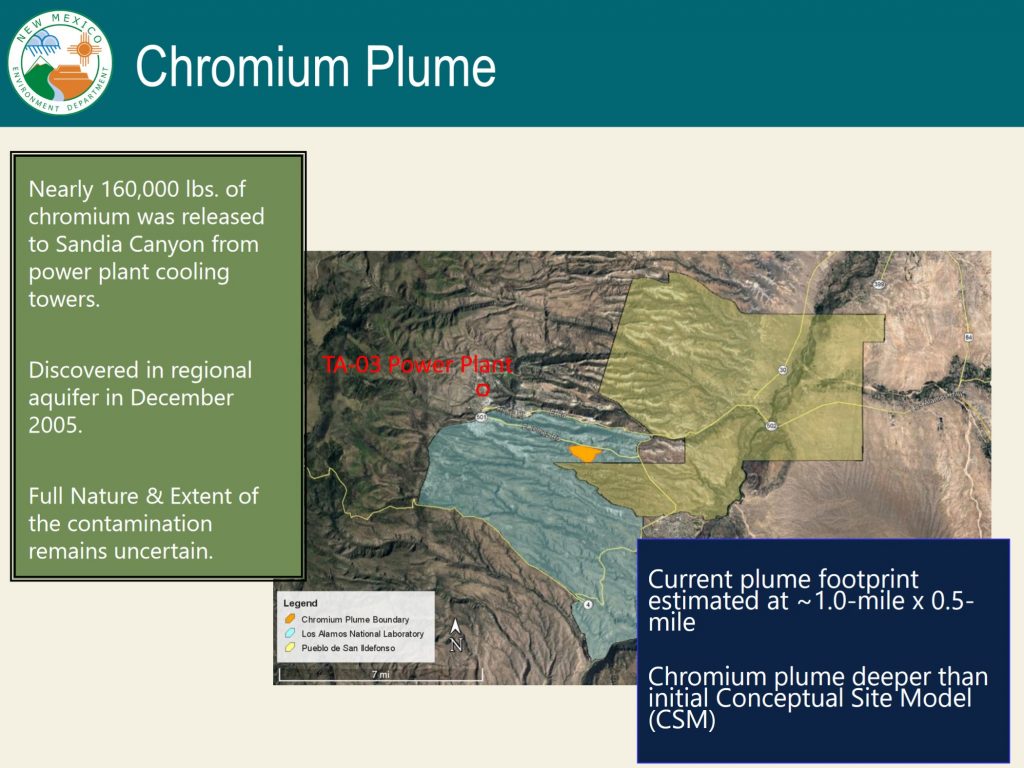

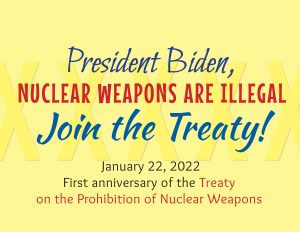
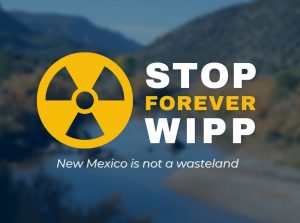






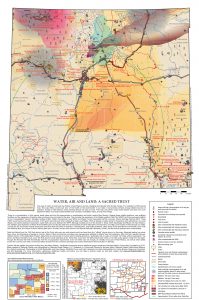
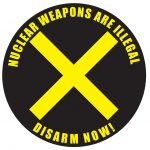
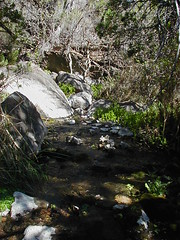

Comments
No comments so far.